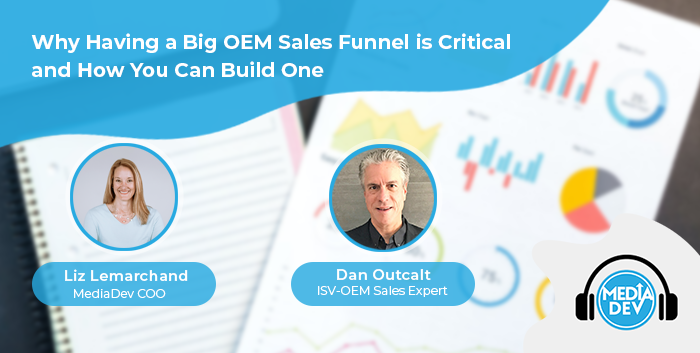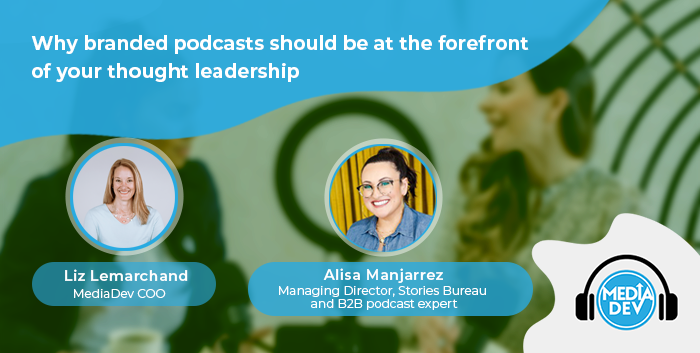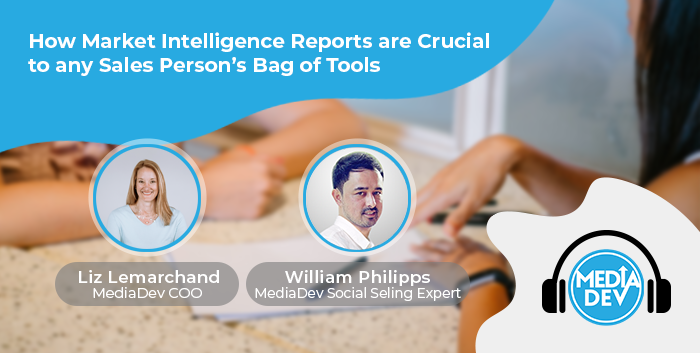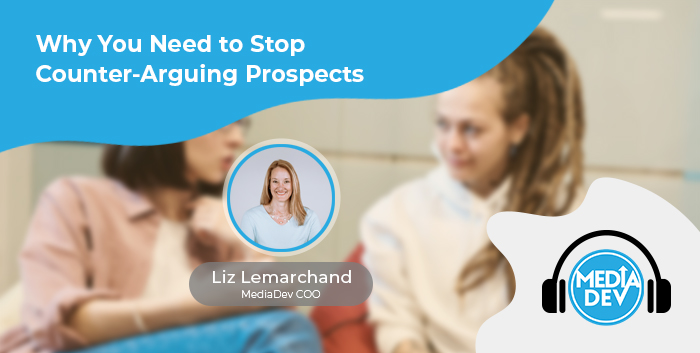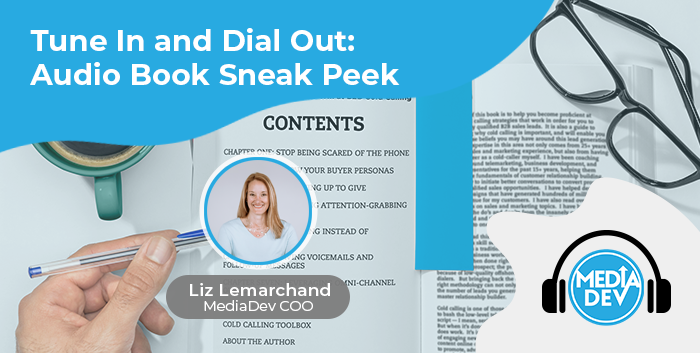Liz walks us through the criteria for validating a lead as a valid business opportunity.
Listen to the episode on Apple Podcast, Google Podcasts, Spotify, Breaker, Pocket casts, RadioPublic, or Anchor, or read the transcript below.
SHOW NOTES
Steps to a successful lead generation campaign [00:34] The importance of being agile in lead generation [03:19] Leads have different levels of maturity [04:30] Marketing qualified leads [05:10] Key takeaways [06:44]
If you’ve enjoyed this episode, please subscribe via Apple Podcast | Google Podcasts | Spotify | Anchor to automatically get the next ones!
Thanks for Listening Today!
Share it with someone you believe will also benefit from listening to it. Use the share buttons below! They’ll thank you for it.
TRANSCRIPT
In order for a lead generation campaign to be successful, we first need to define the target audience that we are going to go after. That is step one. Understanding who you are targeting and why is tool #1. This may revolve around industry sector (I only want to target retail companies, for example); it may revolve around company size (I only want to target companies with more than 1000 employees); it may revolve around location (I am looking only for companies located in London); it may revolve around job function (I am only interested in speaking with the CFO or the CTO of a company). Understanding what is the best target audience to focus your outbound efforts on is the most important element when you are getting started. If you need help to define your buyer personas, you can refer to our buyer persona template on our Resource Library since understanding them inside and out will make your outreach 100% more effective.
Next, you define the mandatory criteria you require – in other words, the information you need to qualify about that particular company. This could have to do with existing software systems in place (I only want to target companies that are using Salesforce or Microsoft 365, for example); it could have to do with having a certain number of servers, or volume of data, or a particular cloud strategy; it could have to do with the potential number of licenses or the potential deal size that I am looking for, so I may need to know how many potential users that company has; it could have to do with needs or challenges that the business is facing around a particular topic, or around a specific project that the company is having difficulty executing. This definition phase is the groundwork to establish the parameters to answer the question of what does the ideal lead look like.
It’s important to keep in mind that every lead is going to be different in some way. Unfortunately, lead generation is not an exact science and because every company is different and will express different pain points, it is important not to be overly rigid either. I equate it to when you are looking to buy a house. You have set out the ideal house you want to buy – the number of bedrooms, bathrooms, the size of the kitchen or the living room – and yet there usually is a little bit of give and take so that you can find something suitable because you may not find the exact perfect fit. It’s important to know that out of all the criteria you established, to define your ideal lead what are the must have’s and what are the nice to have’s. That will give you a bit more leeway when you get started generating leads. You can always refine the definition once you start generating leads to tweak and improve as you move forward. It’s important to be agile, to learn from your experience, and continually work to refine the process. This will only happen if you are relatively open from the start and willing to see what opportunities you are able to generate and whether they suit your needs from a business standpoint. Sometimes it could even happen that you are not sure – is what I have a lead? Could this be a good opportunity? In that case, it’s best to further investigate; this usually happens by talking to internal stakeholders about the lead to see what they think about it before moving forward to the next level. For start-up software vendors, this may also happen through trial and error and that’s ok. It’s important that the lead generation process be a learning experience too and part of that is being open to learning, open to falling down and getting back up. No one learned how to walk in a day, so it’s normal that you are not going to try lead generation out for the first time and do it perfectly from the get-go. Don’t be afraid to make mistakes because that is the best way to teach yourself how to do things better!
It’s also important to keep in mind that you are always going to find leads with different levels of maturity. It is very rare that we outreach to a prospect and they immediately respond by saying, “Thank you so much for contacting me! This is exactly what I need!” Very often prospects may show some level of interest but they are not yet ready to commit to a sales meeting. They are not yet interested in a product demonstration. They may be interested in opting in to receive more information by email, or to being contacted again at some undefined time in the future. However, there is still value in having a nurture pipeline of qualified prospects that you can reach out to punctually (and across channels) over time. We call that type of lead a “Marketing Qualified Lead” or MQL for short. These are in-target prospects who have expressed some interest in learning more, but they don’t have a project, a strong need right now to move forward in the discussion. They may not have budget at this time, or they may not be 100% convinced about your value proposition and they need more time to familiarize themselves with the topic. There is value in gathering information about these Marketing Qualified Leads and creating specific campaigns to nurture such prospects by putting them in front of the right content, subscribing them to receive a monthly newsletter, or inviting them to attend a webinar or other type of event.
Again, your experience from one company to another when you are conducting outreach to generate leads will vary as you move forward. Sometimes it will be very clear to you when you have a good lead, and other times it will not be clear and you may end up thinking to yourself, “I wonder if that could be a lead.” Lead generation is not always black and white and there can be many shades of grey along the way, so it’s important when that happens that you discuss such opportunities with internal stakeholders so that you can brainstorm with them about what you found. Communication between marketing and sales teams is essential in order to refine the process and be sure that expectations are aligned, especially when you are not sure if the scenario you came across is valuable or not.
So as a quick recap on today’s session, I want to drive home the following key takeaways:
- A lead is a potential business opportunity.
- Lead maturity will vary from one prospect to the next.
- It’s important to understand that while you must define the criteria you are looking for, you may not get every piece of the puzzle each time you generate a new lead. However, that doesn’t mean that what you have is uninteresting.
- Collaborate with internal stakeholders to align expectations between marketing and sales so that you can be successful. This is especially important if what you are doing does not seem to be working.



